Between 1991 and 2016, the population of Delhi and its suburbs increased from 9.4 million to 25 million. In 2023, the World Population Review website estimates Delhi’s population to be 32.9 million.
In the December 2016 paper Future urban land expansion and implications for global croplands, it was projected that by 2030, globally, urban areas will have tripled in size, expanding into cropland and undermining the productivity of agricultural systems.
Around 60% of the world’s cropland lies on the outskirts of cities. The paper states that this land is, on average, twice as productive as land elsewhere on the globe.
Africa and Asia will together bear 80% of the projected cropland loss due to rising urbanisation. The disappearance of this productive land will impact staple crops such as maize, rice, soya beans and wheat, which are cornerstones of global food security.
In South Asia, farmland can’t simply spread elsewhere because fertile land is already running out.
One of the paper’s authors, Felix Creutzig (currently, Professor of Sustainability Economics at the Technical University of Berlin), said at the time that, as cities expand, millions of small-scale farmers will be displaced. These farmers produce the majority of food in developing countries and are key to global food security.
However, what Creutzig says is not inevitable. Far from it. Urbanisation is being encouraged and facilitated by design.
According to the World Bank’s lending report, based on data compiled up to 2015, India was easily the largest recipient of its loans in the history of the institution. On the back of India’s foreign exchange crisis in the early 1990s, the IMF and World Bank wanted India to shift hundreds of millions out of agriculture: India was to embark on a massive rural depopulation/urbanisation project.
In addition, in return for up to more than $120 billion (accounting for inflation, this would be $269 billion in 2023) in loans, India was directed to dismantle its state-owned seed supply system, reduce subsidies, run down public agriculture institutions, facilitate the entry of global players and offer incentives for the growing of cash crops to earn foreign exchange.
The details of this plan appear in a January 2021 article by the Mumbai-based Research Unit for Political Economy (RUPE). In effect, it constitutes a massive urbanisation project and the opening of India’s agriculture sector to foreign agribusiness corporations.
Unsurprisingly, therefore, Felix Creutzig predicted the following:
As peri-urban land is converted, smallholders will lose their land. The emerging mega-cities will rely increasingly on industrial-scale agricultural and supermarket chains, crowding out local food chains.
The RUPE says that the opening of India’s agriculture and food economy to foreign investors and global agribusinesses has been a longstanding project of the imperialist countries.
Industrial-scale agriculture is key to the plan. And integral to this model of farming is genetically engineered food crops – whether first generation genetically modified (GM) crops based on genetically modified organisms (GMOs) or newer techniques involving the likes of gene editing.
Glyphosate/GM crop approval
According to a recent report in the Chennai-based New Indian Express (NIE), the Indian government is likely to allow the cultivation of herbicide-tolerant (HT) GM crops. These crops have not been legalised but have been growing in India for some years.
The government is creating a pool of more than 4,000 ‘progressive farmers’ and ‘rural educated youths’ who can help farmers spray glyphosate on GM crops that have been genetically engineered to withstand the herbicide. These pest control officers are to spray glyphosate on behalf of farmers.
Glyphosate is carcinogenic and, in India, its use is officially restricted to tea crops and non-cropping areas like barren land and roadsides. The International Agency for Research on Cancer classified glyphosate as “probably carcinogenic to humans” in 2015.
The NIE quotes a source who implies that the drive to spray glyphosate on agricultural land seems like a precursor of legalising HT GM cotton (I would add – and HT GM food crops eventually).
At this time, only one GM crop – Bt (insecticidal) cotton – is legalised in India.
The legalisation of HT GM cotton would be a key step towards opening a multi-billion-dollar market for global agritech-agrochemicals firms which have a range of HT GM food crops waiting in the pipeline.
Much has been written on the devastating effects that glyphosate has on health and the environment. Glyphosate-based herbicides (GBH)s formulas affect the gut microbiome and are associated with a global metabolic health crisis. They also cause epigenetic changes in humans and animals – diseases skip a generation then appear.
These toxic chemicals have entered the food chain and human bodies at harmful levels and are even in a range of popular children’s cereals.
An April 2023 study in the Journal of the National Cancer Institute measured glyphosate levels in the urine of farmers and other study participants and determined that high levels of the pesticide were associated with signs of a reaction in the body called oxidative stress, a condition that causes damage to DNA and a cancer biomarker.
The study findings appeared after the US Centers for Disease Control reported in 2022 that more than 80% of urine samples drawn from children and adults contained glyphosate. Similar figures are found in the EU. GBHs are the world’s most widely used agricultural weedkiller.
There are dozens of academic studies that indicate the deleterious and disturbing effects of GBHs on human health. Rather than presenting them here, for the sake of brevity, many are listed in the online article Bathed In Pesticides: The Narrative Of Deception (2022).
Attorney Robert F Kennedy Jr and current presidential candidate has been involved with some of the ongoing court cases in the US that have been brought against Bayer regarding the human health damage of Monsanto’s Roundup GBH (Bayer bought Monsanto in 2018).
Kennedy concludes that there is cascading scientific evidence linking glyphosate to a constellation of injuries that have become prevalent since its introduction, including obesity, depression, Alzheimer’s, ADHD, autism, multiple sclerosis, Parkinson’s, kidney and inflammatory bowel disease, brain, breast and prostate cancer, miscarriage, birth defects and declining sperm counts.
He adds that strong science suggests glyphosate is the culprit in the exploding epidemics of celiac disease, colitis, gluten sensitivities, diabetes and non-alcoholic liver cancer which, for the first time, is attacking children as young as 10.
Researchers peg glyphosate as a potent endocrine disruptor, which interferes with sexual development in children. It is also a chelator that removes important minerals from the body and disrupts the microbiome, destroying beneficial bacteria in the human gut and triggering brain inflammation and other ill effects.
So, why do GBHs remain on the market? It’s because of the power of the agritech/agrochemical sector and the don’t look, don’t see approach of compromised regulatory bodies: see Glyphosate: EU assessment report excludes most of the scientific literature from its analysis (2021) by GMWatch and Glyphosate in the EU: product promoters masquerading as regulators in a ‘cesspool of corruption’? (2016) in The Ecologist.
Consider what veteran journalist Carey Gillam says:
US Roundup litigation began in 2015 after the International Agency for Research on Cancer classified glyphosate as a probable human carcinogen. Internal Monsanto documents dating back decades show that the company was aware of scientific research linking its weed killer to cancer but instead of warning consumers, the company worked to suppress the information and manipulate scientific literature.
Over the years, Monsanto mounted a deceitful defence of its health- and environment-damaging Roundup and its GM crops and orchestrated toxic smear campaigns against anyone – scientist or campaigner – who threatened its interests.
In 2016, campaigner Rosemary Mason wrote an open letter to European Chemicals Agency Executive Director Geert Dancet. It can be accessed on the academia.edu site.
In it, she sets out how current EU legislation was originally set up to protect the pesticides industry and how Monsanto and other agrochemical corporations helped the EU design the regulatory systems for their own products.
There is much at stake for the industry. According to Phillips McDougall’s Annual Agriservice Reports, herbicides made up 43% of the global pesticide market in 2019 by value. Much of the increase in glyphosate use is due to the introduction of glyphosate-tolerant soybean, maize and cotton seeds in the US, Brazil and Argentina.
GBHs are a multi-billion-dollar money-spinning venture for the manufacturers. But this latest development in India is as much about the legalisation of a wide range of proprietary HT GM seeds and crops as it is about glyphosate because both are joined at the hip.
Regulatory delinquency
In India, five high-level reports have advised against the adoption of GM crops: the Jairam Ramesh Report (2010); the Sopory Committee Report (2012); the Parliamentary Standing Committee Report (2012); the Technical Expert Committee Final Report (2013); and the Parliamentary Standing Committee on Science & Technology, Environment and Forests (2017).
Given the health and environmental issues surrounding GM crops, as well as the now well-documented failure of Bt cotton in the country, it comes as little surprise that these reports advise against their adoption.
This high-level advice also derives, in part, from GM ‘regulation’ in India being dogged by blatant violations of biosafety norms, hasty approvals, a lack of monitoring abilities, general apathy towards the hazards of contamination and a lack of institutional oversight.
The ‘Technical Expert Committee Final Report’ was scathing about India’s prevailing regulatory system and highlighted its inadequacies and serious inherent conflicts of interest. As we have seen with the push to get GM mustard commercialised, the problems described by the TEC persist.
The drive to get GM crops commercialised has been relentless, not least GM mustard. The Genetic Engineering Appraisal Committee (GEAC), the country’s apex regulatory body for GMOs, has pushed ahead by giving this crop the nod. However, the case of GM mustard remains stuck in the Supreme Court due to a public interest litigation lodged by environmentalist Aruna Rodrigues.
Rodrigues argues that GM mustard is being undemocratically forced through with flawed tests (or no testing) and a lack of public scrutiny: in other words, unremitting scientific fraud and outright regulatory delinquency.
This crop is also HT, which is wholly inappropriate for a country like India with its small biodiverse farms that could be affected by its application on nearby fields.
However, despite the ban on GM crops, in 2005, biologist Pushpa Bhargava noted that unapproved varieties of several GM crops were being sold to farmers. In 2008, Arun Shrivasatava wrote that illegal GM okra had been planted in India and poor farmers had been offered lucrative deals to plant “special seed” of all sorts of vegetables.
In 2013, a group of scientists and NGOs protested in India against the introduction of transgenic brinjal in Bangladesh – a centre for origin and diversity of the vegetable – as it would give rise to contamination of the crop in India. In 2014, the West Bengal government said it had received information regarding “infiltration” of commercial seeds of GM Bt brinjal from Bangladesh.
In 2017, the illegal cultivation of an HT GM soybean was reported in Gujarat. Bhartiya Kisan Sangh (BKS), a national farmers organisation, claimed that Gujarat farmers had been cultivating the HT crop.
As mentioned above, HT cotton is illegally growing in India.
In the 2017 paper – The ox fall down: path-breaking and technology treadmills in Indian cotton agriculture – Glenn Stone and Andrew Flachs note the tactic of encouraging farmers to abandon traditional on-farm practices, which coincides with the appearance of an increasing supply of HT GM cotton seeds.
This is a cynical attempt to place farmers on corporate seed and chemical (glyphosate) treadmills.
The authors write:
Although India’s cotton sector has been penetrated by various input- and capital-intensive methods, penetration by herbicide has been largely stymied. In Telangana State, the main obstacle has been the practice of ‘double-lining’, in which cotton plants are spaced widely to allow weeding by ox-plow… double-lining is an example of an advantageous path for cash-poor farmers. However, it is being actively undermined by parties intent on expanding herbicide markets and opening a niche for next-generation genetically modified cotton.
Stone and Flachs note the potential market for herbicide growth alone in India is huge. Writing in 2017, the authors note that sales could soon reach USD 800 million with scope for even greater expansion. Indeed, enormous expansion if HT GM crops become legal.
Friends in high places
Global agritech firms are salivating at the prospect of India being prised open for the introduction of GM crops. The industry has always had high-level supporters in India and abroad. And this leads back to what was stated earlier in the article – the plan to industrialise Indian agriculture at the behest of the World Bank and foreign agribusiness and the manoeuvring into position of compliant officials.
PM Modi proclaimed in 2014 that GM represents a good business-investment opportunity. Renowned environmentalist Vandana Shiva has highlighted the arm twisting that has gone on in an attempt to force through GMOs into India, with various politicians having been pushed aside until the dotted line for GMO open field-testing approval was signed on.
Back in late 2015, I co-authored a piece with then editor of The Ecologist Oliver Tickell – Rice, wheat, mustard… India drives forward first GMO crops under veil of secrecy.
Seventeen or more secret applications had been made to India’s GMO regulators for trials and release of GM crops, including rice, wheat, chickpeas, brinjal and mustard. In a violation of the law, regulators had released no information about the applications, raising fears that India’s first GMOs will be released with no health, safety or environmental testing.
It is not surprising then that calls have been made for probes into the workings of the GEAC and other official bodies, who seem to have been asleep at the wheel or deliberately looking the other way as illegal GM crop cultivation has taken place.
India’s first GM crop cultivation – Bt cotton – was discovered in 2001 growing on thousands of hectares in Gujarat, spread surreptitiously and illegally. Campaigner Kavitha Kuruganti said the GEAC was caught off-guard when news about large-scale illegal cultivation of Bt cotton emerged, even as field trials that were to decide whether India would opt for this GM crop were still underway.
In March 2002, the GEAC ended up approving Bt cotton for commercial cultivation in India. To this day, no liability has been fixed for the illegal spread. We could well be witnessing a rerun of this scenario for HT cotton and HT food crops.
The tactic of contaminate first then legalise has benefited industry players before. Aside from Bt cotton in India, in 2016, the US Department of Agriculture granted marketing approval of GM Liberty Link 601 (Bayer CropScience) rice variety following its illegal contamination of the food supply and rice exports. The USDA effectively sanctioned an ‘approval-by-contamination’ policy.
The writing could be on the wall for India.
Does India need GM?
A common claim is that GMOs are essential to agriculture if we are to feed an ever-growing global population. Supporters of GM crops argue that by increasing productivity and yields, this technology will also help boost farmers’ incomes and lift many out of poverty.
In a 2018 paper in the journal Current Science, eminent scientists P C Kesavan and M S Swaminathan (regarded as the ‘father of the Green Revolution’ in India) questioned the efficacy of and the need for GMOs in agriculture.
The performance of GM crops has been a hotly contested issue and, as highlighted in Kesavan and Swaminathan’s piece and by many others, there is sufficient evidence to question their efficacy, especially that of HT crops and their shocking, devastating impact in places like Argentina.
Kesavan and Swaminathan argue that GM is supplementary and must be need based. In more than 99% of cases, they say that time-honoured conventional breeding is sufficient. Too often, however, conventional options and innovations that outperform GM are sidelined in a rush by powerful interests to facilitate the introduction of GM crops.
Although India fares poorly in world hunger assessments, the country has achieved self-sufficiency in food grains and has ensured there is enough food available to feed its entire population. It is the world’s largest producer of milk, pulses and millets and the second-largest producer of rice, wheat, sugarcane, groundnuts, vegetables and fruit.
People are not hungry in India because its farmers do not produce enough food. Hunger and malnutrition result from various factors, including inadequate food distribution, (gender) inequality and poverty; in fact, the country continues to export food while millions remain hungry. It’s a case of ‘scarcity’ amid abundance.
Where farmers’ livelihoods are concerned, the pro-GMO lobby says that GM will boost productivity and help secure cultivators a better income. Again, this is misleading: it ignores crucial political and economic contexts. Even with bumper harvests, Indian farmers still find themselves in financial distress.
India’s farmers are not experiencing financial hardship due to low productivity. They are reeling from the effects of neoliberal policies, years of neglect and a deliberate strategy to displace most of them at the behest of the World Bank and predatory global agri-food corporations.
But pro-GMO supporters, both outside of India and within, along with the neoliberal think tanks many of them are associated with, have wasted no time in wrenching the issues of hunger and poverty from their political contexts to use notions of ‘helping farmers’ and ‘feeding the world’ as lynchpins of their promotional strategy.
The knowledge and many of the traditional practices of India’s small farmers are now recognised as sophisticated and appropriate for high-productive, sustainable agriculture. It is no surprise therefore that a 2019 FAO high-level report has called for agroecology and smallholder farmers to be prioritised and invested in to achieve global sustainable food security. It argues that scaling up agroecology offers potential solutions to many of the world’s most pressing problems, whether, for instance, climate resilience, carbon storage, soil degradation, water shortages, unemployment or food security.
Available evidence suggests that (non-GMO) smallholder farming using low-input methods is more productive in total output than large-scale industrial farms and can be more profitable.
It is for good reason that the FAO high-level report referred to earlier along with the former UN Special Rapporteur on the Right to Food Professor Hilal Elver and numerous other papers and reports advocate agroecology call for investment in this type of agriculture. Despite the pressures, including the fact that globally industrial agriculture grabs 80% of subsidies and 90% of research funds, smallholder agriculture plays a major role in feeding the world.
In the introduction to a recent article, I wrote that the prevailing globalised agrifood model is responsible for increasing rates of illness, nutrient-deficient diets, a narrowing of the range of food crops, water shortages, chemical runoffs, increasing levels of farmer indebtedness, the undermining and destruction of local communities and the eradication of biodiversity.
Do Indian citizens want a GM/glyphosate-drenched, industrial food system that brings with it all of the above?
I also wrote that the model relies on a policy paradigm that privileges urbanisation, global markets, long supply chains, external proprietary inputs, highly processed food and market (corporate) dependency.
The solution lies in a paradigm shift that abandons the notion that urbanisation equates with ‘progress’. A shift that prioritises rural communities, small independent retail enterprises (instead of global giants like Walmart-Flipkart and Amazon) and smallholder farms, local markets, short supply chains, on-farm resources, diverse agroecological cropping, nutrient-dense diets and food sovereignty.
A shift that rejects the ecomodernist techno-dystopia of hyper-urbanisation, genetically engineered crops, biosynthetic food and farmerless farms and a ‘food transition’ all under the control of a big data-agritech cartel that wraps all of the above in a veneer of fake green.
There are alternative visions, potential outcomes and resistance that can challenge the ecomodernist agenda.
Instead of their eradication, creating land markets to amalgamate their land for industrial-scale mono-cropping or using vital cropland to build on, smallholder farmers and rural communities should be placed at the centre of development policies. Moreover, inspiration can be taken from the worldviews of indigenous peoples and, as anthropology professor Arturo Escobar says, the concept of Buen Viver: promoting ways of living that stress the collective well being of humans and nature and recognising the inseparability and interdependence of both.
For instance, India’s indigenous peoples’ low-energy, low-consumption tribal cultures are the antithesis of capitalism and industrialisation, and their knowledge and value systems promote genuine sustainability through restraint in what is taken from nature.
This entails a fundamental transformation in values, priorities and outlooks and a shift away from predation, imperialism, domination, anthropocentrism and plunder.
That’s what a genuine ‘food transition’ and Buen Viver would really mean.
• Many of the issues mentioned in the article above are discussed in the author’s free-to-read e-book.
This content originally appeared on Dissident Voice and was authored by Colin Todhunter.

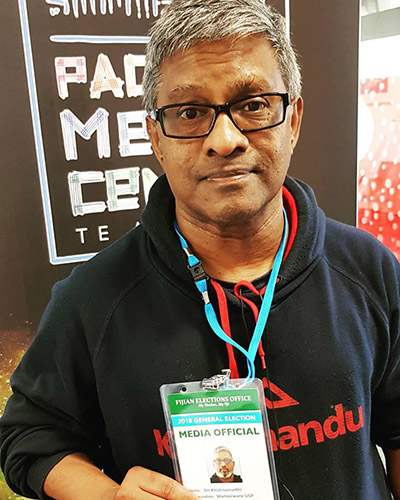
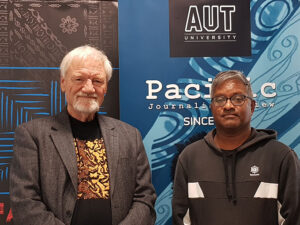
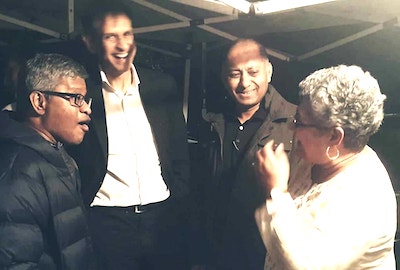
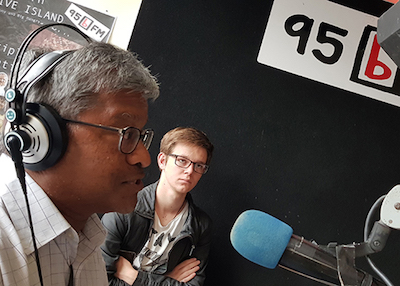


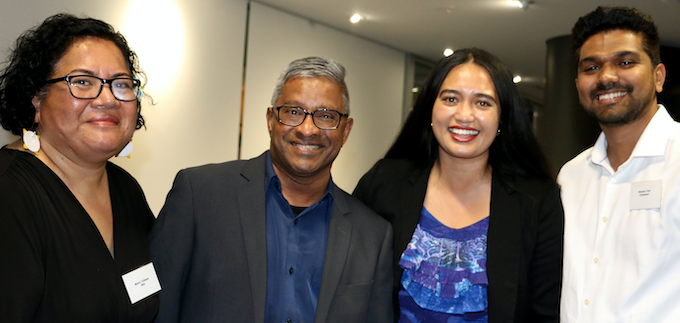





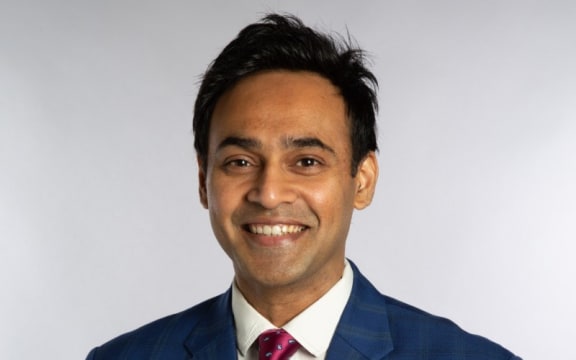
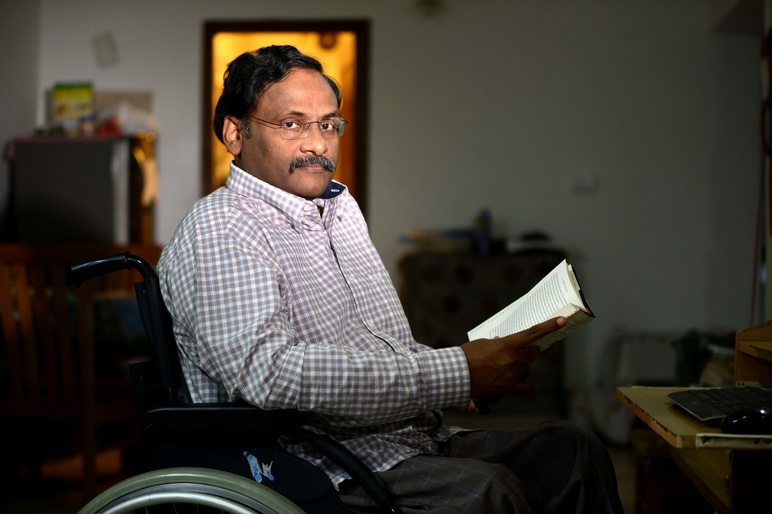






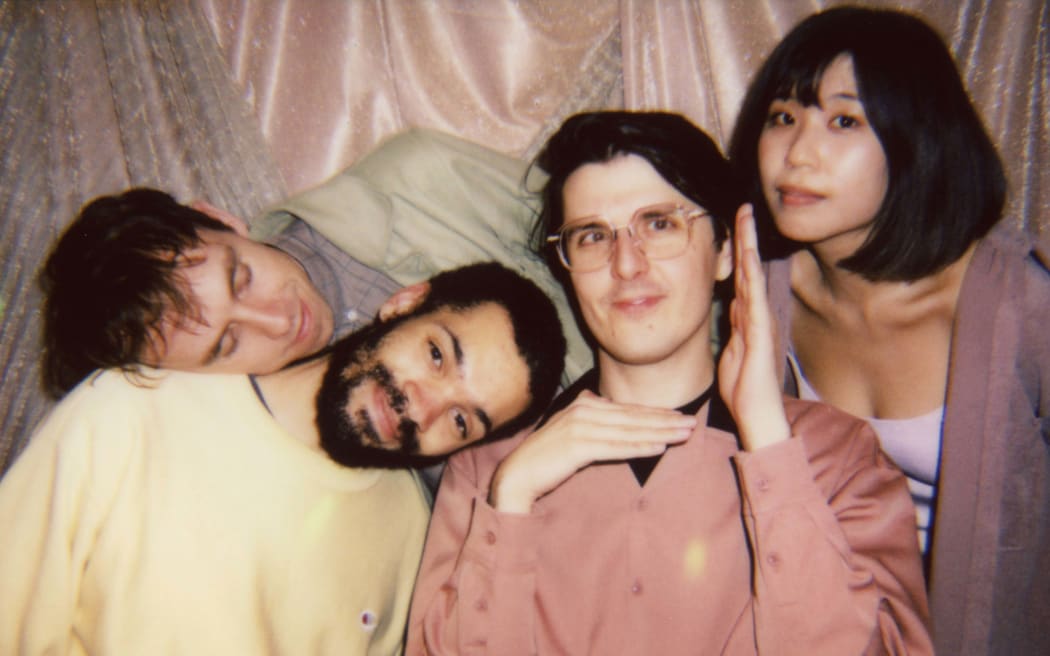










 “C’était un bon père”
“C’était un bon père” L’ex-femme de l’assaillant d’Annecy témoigne sur BFMTV
L’ex-femme de l’assaillant d’Annecy témoigne sur BFMTV 



